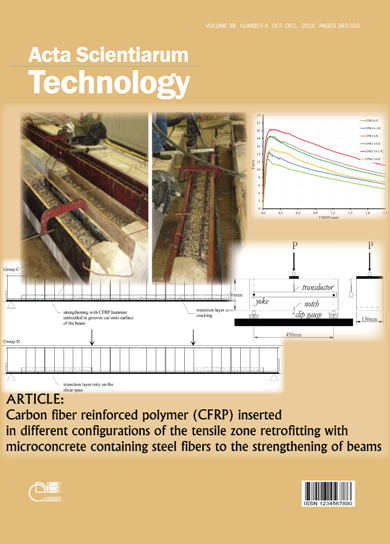<b>Physicochemical, microbiological and microscopic evaluation of artisanal rapaduras produced in Cuiabá, Mato Grosso, Brazil
DOI:
https://doi.org/10.4025/actascitechnol.v38i4.28441Keywords:
quality, food safety, non-centrifugal sugar, chemical composition.Abstract
The aim of this work was the physicochemical, microbiological and microscopic evaluation of artisanal rapaduras produced in Cuiabá, Mato Grosso State, Brazil. The determination of the proximal composition, pH and the microscopic analyses were made according to the Association of Official Analytical Chemists (AOAC). The concentrations of minerals and toxic metals were quantified by flame atomic absorption spectrometry. The Coliforms at 45°C and Salmonella sp. were determined according to the American Public Health Association (APHA). The results obtained were: moisture (6.09 to 16.34%), ash (0.07 to 1.88%), insoluble solids (0.11 to 11.3%), pH (4.73 to 5.61), proteins (0.21 to 0.47%), sucrose (13.15 to 43.89%), and reducing sugars (10.96 to 26.28%). Significant differences were found between the samples (p £ 0.05) as well as nonconformities in relation to national regulations. The mineral contents showed significant differences between lots of samples (p £ 0.05) and some lots presented Cd and Pb concentrations above the maximum values allowed by Brazilian legislation. High quantities of unwanted materials were detected and none of the samples presented microbiological contamination. The results suggest the creation of technical standards for quality control for the production of rapaduras to ensure food safety.
Â
Downloads
Downloads
Published
How to Cite
Issue
Section
License
DECLARATION OF ORIGINALITY AND COPYRIGHTS
I Declare that current article is original and has not been submitted for publication, in part or in whole, to any other national or international journal.
The copyrights belong exclusively to the authors. Published content is licensed under Creative Commons Attribution 4.0 (CC BY 4.0) guidelines, which allows sharing (copy and distribution of the material in any medium or format) and adaptation (remix, transform, and build upon the material) for any purpose, even commercially, under the terms of attribution.
Read this link for further information on how to use CC BY 4.0 properly.















8.png)




